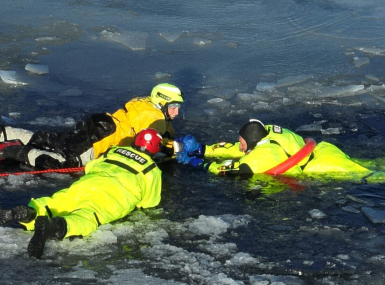Problem:
|
Dane County, Wis. needed to address a racial gap in its criminal justice system.
|
Solution:
|
Involve the local community to help re-envision the system through a more diverse and inclusive lens.
|
Dane County, Wis. is working with Black, Indigenous and people of color (BIPOC) community groups to build a community justice court that will address the racial gap in its criminal justice system — which has one of the starkest disparities in the country.
Determining that it was important to not only involve those most impacted by the racial disparities in the justice system in the conversation but also compensate them for their work, the Dane County Board and Criminal Justice Council (CJC) contracted with seven BIPOC non-profits to create a needs assessment to re-envision the criminal justice system through a more diverse and inclusive lens.
“What we’re hearing is what we’ve been doing for 100-plus years is not working for communities of color,” said Colleen Clark-Bernhardt, Criminal Justice Council coordinator. “It’s incumbent on Dane County — and I would posit the rest of the country — to do something else because that’s what justice and fairness should look like. But also, economically, it makes sense because the folks who we’re incarcerating today will be in our communities tomorrow and we want them to be helping support our schools, our roads and live a sustaining life.”
The assessment, which cost the county $100,000, engaged BIPOC Dane County residents who have lived experience with the criminal justice system as well as those who are invested in bridging the inequity gap.
Wisconsin imprisons one in 36 Black adults — the highest rate in the United States, according to a 2021 Sentencing Project report. Once in the justice system, data shows that Dane County social workers recommend formal judicial proceedings against Black youth at a 25 percent higher rate than their white peers, The Capital Times reported in 2020.
“There’s a lot of distrust in the justice system and how things have been working and so they’re very skeptical about how this will be different from what we already have going on in Dane County, so they were saying, ‘How do we make it different? How do we actually create a separation between the courts and the center, so people can feel a little bit more comfortable?’” said Alex Booker, a graduate of Black community leadership group Urban Triage, in the CJC’s community organization pre-engagement discussion.
The primary message that came out of the assessment was the need for hiring people of color in the community court and embedding racial equity in every aspect of its creation, including what services are offered and how they’re delivered, Clark-Bernhardt said.
“One of the themes that rose across the board, in addition to the need for accessibility both linguistically and culturally for immigrant communities, was also the ability to share information about what the criminal system looks like,” said Evelyn Cruz, director of program planning and evaluation for Centro Hispano, in the CJC discussion. “What are the agencies that compose that? And what are the ways to better access the system?”
The county included the feedback that came out of the needs assessment in its application for a $600,000 grant it won to create the community court, which is now in the planning process.
The community court’s advisory subcommittee, which began meeting in April and is tasked with developing a vision for the community justice initiative by September, is made up of stakeholders in the criminal justice system, BIPOC non-profits, victim advocates and community members with lived experiences in the system.
The community justice court itself is the next step the county’s taken in bridging injustice in its criminal justice system, following the adoption of its Community Restorative Court in 2014, which places an emphasis on repairing harm over punishment.
“There was this gnawing understanding that while our Community Restorative Court, which is for 17-to-25-year-olds, has been really impactful, we needed something bigger,” Clark-Bernhardt said.
While no formal positions have been created and there are no plans yet for a physical building, Dane County Executive Joe Parisi has included funding for a community court coordinator in the 2023 annual budget and Clark-Bernhardt said she could see a capital funding proposal happening for a physical space once the report and recommendations have been given to the CJC.
“The ideal vision is that it’s not just a community court, but that it has service providers, peer support and navigators all in one building,” Clark-Bernhardt said. “… Having an opportunity to do something different and potentially really address the root cause of crime and get somebody assistance, both on the victim side and the offender side, to attempt to break that cycle, is what we’re trying to do. So, we just want to provide for a healthier person, healthier family, healthier community and then ultimately a much healthier county.”




